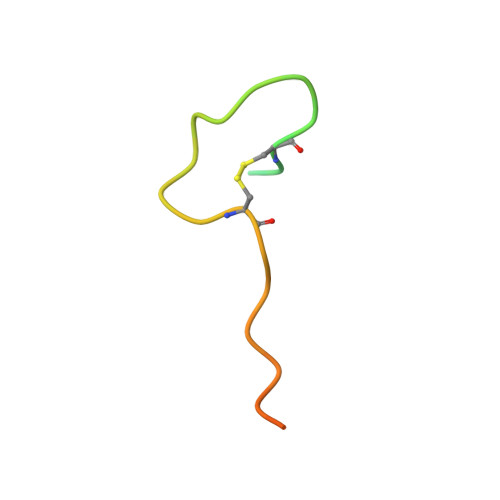Human Oxygenase Variants Employing a Single Protein Fe II Ligand Are Catalytically Active.
Brasnett, A., Pfeffer, I., Brewitz, L., Chowdhury, R., Nakashima, Y., Tumber, A., McDonough, M.A., Schofield, C.J.(2021) Angew Chem Int Ed Engl 60: 14657-14663
- PubMed: 33887099
- DOI: https://doi.org/10.1002/anie.202103711
- Primary Citation of Related Structures:
7E6J - PubMed Abstract:
Aspartate/asparagine-¦Â-hydroxylase (AspH) is a human 2-oxoglutarate (2OG) and Fe II oxygenase that catalyses C3 hydroxylations of aspartate/asparagine residues of epidermal growth factor-like domains (EGFDs). Unusually, AspH employs two histidine residues to chelate Fe II rather than the typical triad of two histidine and one glutamate/aspartate residue. We report kinetic, inhibition, and crystallographic studies concerning human AspH variants in which either of its Fe II binding histidine residues are substituted for alanine. Both the H725A and, in particular, the H679A AspH variants retain substantial catalytic activity. Crystal structures clearly reveal metal-ligation by only a single protein histidine ligand. The results have implications for the functional assignment of 2OG oxygenases and for the design of non-protein biomimetic catalysts.
Organizational Affiliation:
Chemistry Research Laboratory and the Ineos Oxford Institute for Antimicrobial Research, University of Oxford, 12 Mansfield Road, Oxford, OX1 3TA, UK.

















